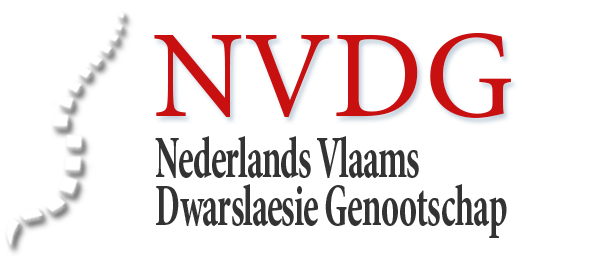Active LifestyLe Rehabilitation Interventions in aging Spinal Cord injury (ALLRISC)
- Lucas van der Woude, PhD (Program Supervision)
- Sonja de Groot, PhD (Co-ordination)
With today’s specialized medical care, life expectancy of persons with a spinal cord injury (SCI) has considerably improved. Many individuals with chronic SCI, however, show a serious inactive lifestyle, associated with de-conditioning and secondary complications (e.g. pressure sores, urinary andrespiratory tract infections, osteoporosis, upper-extremity pain, obesity, diabetes, cardiovascular disease) and resulting in reduced participation and quality of life (QoL). Avoiding this downward spiral, that threatens persons aging with SCI, is crucial. This requires an understanding of underlying processes, which helps define components of rehabilitation aftercare and preserve functioning of persons with chronic SCI. No regular long-term rehabilitation aftercare system is currently operational in the Netherlands, nor have relationships between inactive lifestyle, de-conditioning, and secondary complications been systematically evaluated in chronic SCI. The ZonMw-sponsored SCI research over the past 10yrs mainly focused on the clinical rehabilitation phase and first years after discharge. Building upon the outcomes and experience of this research program, the current proposal addresses inactive lifestyle, de-conditioning, and secondary complications in people aging with SCI. It is hypothesized that self-management and physical exercise are effective interventions to enhance active life style and fitness, and prevent some of the secondary complications, since “self-management is power” and “exercise is medicine”.
The program consists of one cross-sectional study and three Randomized Clinical Trials. All studies share their common focus on active lifestyle and the use of outcome measures on active lifestyle, fitness, participation, health and well-being. Results of this 4-study program help formulate requirements for a lifespan covering rehabilitation aftercare system.
Study 1 entails the analysis of prevalence, risk factors and impact of long-term inactive lifestyle, de-conditioning, and secondary complications in a time since injury (TSI)-stratified cross-sectional study among 300 persons with chronic SCI (age at injury 18-35yrs; TSI 10-30yrs). It is hypothesized that the prevalence of inactive lifestyle, de-conditioning and secondary complications increases with TSI and age, and that these conditions are associated with impaired participation and QoL. All 8 SCI-specialized Dutch rehabilitation centres (RCs) participate in this study. The 50% individuals with the least active lifestyle in all centres will be invited for one of 3 interventions to improve their activity level through self-management (Study 2), upper-body exercise (Study 3), or electrical stimulation-induced lower-body exercise (Study 4).
Study 2 evaluates the effects of a self-management intervention in 4 RCs (n=2x40). The intervention focuses on problem-solving ability and pro-active coping, using principles of adult learning. Self-management interventions have shown to be effective in preventing health problems and in modifying behaviour, especially when active learning strategies are included. The intervention group will receive a 16-wk training program, consisting of group and individual teaching and counselling sessions, whereas the control group only receives oral and written information (knowledge transfer).
Study 3 focuses on the upper-body overuse paradigm and will be conducted in two other RCs. Specific training can help to maintain and improve fitness and thereby an active lifestyle. However, the intensity of the training should not be too high to avoid overuse, fatigue and pain. Therefore, study 3 evaluates a structured intervention (n=20) consisting of 16 wk low-intensity hand rim wheelchair training program (30%heart rate reserve; 3x/wk) compared to non-trained controls (n=20). It is hypothesized that this training will improve active lifestyle, fitness and QoL without leading to overuse of the upper-body musculoskeletal system.
In the third RCT (Study 4), conducted in the final two RCs, the context of the problem studied is the lower-body disuse paradigm. Systematic disuse of the lower body due to paralysis, leads to secondary complications such as vascular, muscle and skin tissue deterioration, leading to pressure sores. Effects of reactivating this inactive lower body by electrical stimulation-induced leg cycling combined with voluntary arm cycling (hybrid exercise) (16 wk, 3x/wk) will be evaluated in an experimental (n=20) group compared to a control group receiving regular handcycling training (n=20). Outcome measures will be active lifestyle, fitness and health as well as ‘disuse and inactivity’-related measures such as skin, muscular, bone and vascular characteristics.
Results of this multidisciplinary research program will advance knowledge on long-term health and functioning in persons with SCI, on effective interventions for chronic SCI, and will benefit the definition of SCI rehabilitation follow-up care.
- Presentation Lucas van der Woude about ALLRISC
- Download the first newsletter of ALLRISC here!
- Download the second newsletter of ALLRISC here!
- Download the ALLRISC poster here!
- Download the third newsletter of ALLRISC here!
- Download the fourth newsletter of ALLRISC here!
Publications
- Active LifestyLe Rehabilitation Interventions in aging Spinal Cord injury (ALLRISC): a multicentre research program. Van der Woude LH, de Groot S, Postema K, Bussmann JB, Janssen TW; ALLRISC, Post MW. Disabil Rehabil. 35(13): 1097-103.
- Physical activity in wheelchair users with spinal cord injury: prerequisites for and effects of an active lifestyle. De Groot S, Valent LJ, van Koppenhagen CF, Broeksteeg R, Post MW, van der Woude LH. Ned Tijdschr Geneesk. 2013; 157(37): A6220.





